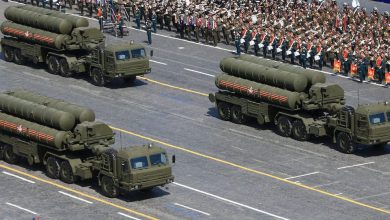US Economy Facing Stagflation Risk After Q1 GDP Report, Not Recession

The latest GDP and inflation figures were those least expected by investors and could portend serious problems to come.
“This is the worst report of both worlds: slower-than-expected growth and higher-than-expected inflation,” wrote David Donabedian, chief investment officer of CIBC Private Wealth US.
First-quarter growth was well below estimates, increasing at an annualized rate of 1.6%, according to the Bureau of Economic Analysis. Not only is that well below forecasts of 2.5%, but it also falls short of the 3.4% increase achieved in the fourth quarter.
Although such a slowdown would generally strengthen calls for interest rate easing to begin, the report also notes a stronger-than-expected rise in consumer prices. This seriously limits the Federal Reserve’s ability to act, as the central bank has made it clear that it needs inflation to fall before it can cut rates. Stocks – which had long priced in these price drops – sold off sharply.
It’s also bad news for the economy, because faltering growth and higher prices are key ingredients of stagflation, characterized by economic apathy and stubbornly high inflation over a prolonged period. Such a scenario may be even more difficult to combat than a recession, due to the dynamic described above: the Fed’s hands are largely tied.
The United States’ last dalliance with stagflation dates back to the 1970s. The precedent may provide insight into how America’s economic situation might evolve and makes it clear why economists are desperate to avoid another situation.
Earlier this decade, geopolitical disagreements prompted the OPEC coalition to restrict crude exports to the United States, causing energy prices to skyrocket. With the added help of high government spending and the decoupling of the dollar from gold, inflation soared to double digits, while the economy collapsed.
The period was so tumultuous that it upended long-held macroeconomic theories and forced the Fed to strengthen its role in the economy. In order to finally bring the situation under control, then-Fed Chairman Paul Volcker was forced to raise interest rates by a staggering 20%, easing high prices but plunging the United States into deep crisis. recession.
This is why current analysts shudder at comparisons with the period 50 years ago and why stagflationary forecasts carry weight.
JPMorgan’s Jamie Dimon is among those who have recently made allusions to the stagflation of the 1970s, warning that markets had become too gloomy about the state of the economy.
“I’m afraid it’s going to look more like the ’70s than we’ve seen before,” the prominent bank chief told the Economic Club of New York last week.
His point of view – which he has stated several times – comes from the fact that fiscal spending has once again exploded, while the economy is about to bear a number of inflationary factors: green industrialization to global remilitarization.
But stagflation remains far from possible. Despite still-high inflation, markets continue to expect at least one rate cut this year. Furthermore, Barclays analysts led by Pooja Sriram highlighted after the release of the GDP report that final sales to domestic buyers had increased enough to suggest that “demand conditions remain strong”.
Friday’s personal consumption expenditures report — considered the Fed’s main inflation gauge — will give investors a clearer idea of where inflation is heading. If the rate rises, the Fed will have little choice but to tighten policy further, according to Donabedian.
“We are not far from having all rate cuts reversed relative to investor expectations. This requires Chair Powell to adopt a hawkish tone for next week’s FOMC meeting,” he said .
businessinsider





